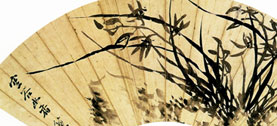PLA military parade symbolizes army’s modernization
Author : Wang Xinjun Source : Chinese Social Sciences Today 2017-08-16
Aug. 1 marked the 90th anniversary of the founding of the Chinese People’s Liberation Army (PLA). On the day before, China showcased its real combat capabilities in a grand military parade at the Zhurihe training base in North China’s Inner Mongolia Autonomous Region.
Chinese President Xi Jinping, who is also Chairman of the Central Military Commission, oversaw the parade, which featured flybys of advanced jets and masses of marching troops. During his keynote address to the parade, Xi lauded the contributions the PLA has made to the country and the people in the past nine decades.
Unlike most parades, which are traditionally held in squares, this full-scale military maneuver was held in a dust-covered field. Focused on combat effectiveness, the parade embodies the fundamental changes that have taken place in China’s armed forces due to sweeping reform measures in recent years.
A showcase of China’s military proficiency and power, the parade comprehensively tested the PLA’s military might and provided an opportunity to reflect on military reforms implemented since the 18th CPC National Congress. During a military reform working conference of the Central Military Commission in November 2015, Xi announced a plan to comprehensively deepen national defense and military reform. Since then, China has embarked on a pathway of radical reform of its armed forces.
Directed by the Central Military Commission, the four general headquarters of the PLA have been restructured. Three new organizations have also been established—the Army Leading Organ, a centralized command hub responsible for coordinating joint operations; the Rocket Force, the core strategic deterrence power to command the PLA’s nuclear missile force; the Strategic Support Force, which is in charge of cyber warfare, space security and online espionage. Through such bold, active and prudent steps, China’s PLA has accomplished critical reforms in its organizational structure and institutional function, notably enhancing military capabilities.
Moreover, the top bureaucracy of the PLA was streamlined and the number of troops has been cut by a substantial amount in recent years. With a more optimized command system and more rational officer-soldier ratio, the military forces have been reshaped.
This restructuring includes the formation of a joint operational system involving different units with elite combat forces as the majority, mapping out a more effective and capable new layout for the PLA.
In addition, the parade offered a chance to display the PLA’s latest warfare equipment. As informatization becomes the core of modern military development and a reality of the world military revolution, the Chinese military is adapting to modern information warfare by upgrading strategic equipment and other deterrent weapons. The country’s military has become more nimble and technologically proficient following tests of combat performance of new armaments under complex and harsh situations while fighting capability has been constantly enhanced through military training.
As many as 600 main combat weapons, and nearly 130 aircrafts were demonstrated in the parade. The armament modernization could be notably seen that almost half of the warfare equipment and weapons including electronic warfare devices made their debut at the military parade in Zhurihe base.
The parade did not feature goose-stepping in the march-past. Instead, the officers and soldiers totaling 12 thousand rode in military vehicles that rumbled past the parade ground. The unscripted massive drill also added authenticity to the army’s training, which was more like a war game and the scale of it was closer to actual battle. Each procedure of the parade had more of a combat feel, representing Chinese military’s special warfare prowess.
Through steadfast reform and relentless efforts in the past 90 glorious years, the PLA troops have proven to be a strong force for national defense. Forging ahead, it is determined to achieve greater accomplishments and demonstrate its fidelity to the goals of national security and world peace.
Wang Xinjun is a research fellow from the Department of Military Strategy at the Academy of Military Sciences of PLA.
Interview with Wang Gungwu on significance of studying overseas Chinese
Wang Gungwu is a distinguished Australian historian who studies overseas Chinese. He currently works at the Faculty o...
-
On the rat/mouse of the zodiac
2020-02-20
-
Regional development calls for Huaihe culture’s soft power
2020-01-10
-
Archaeological discoveries unveil Maritime Silk Road
2020-01-06
-
China’s industrial art printing
2019-12-10
-
Yue-Gan Ancient Road: A journey into Hakka history
2019-05-13
-
The Lantern Festival in Dream of the Red Chamber
2019-02-18














 2011-2013 by www.cssn.cn. All Rights Reserved
2011-2013 by www.cssn.cn. All Rights Reserved